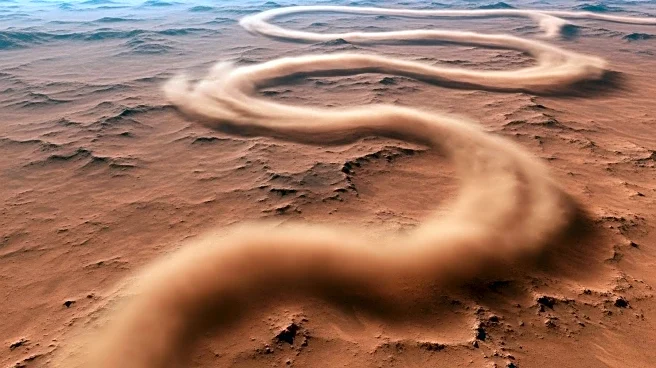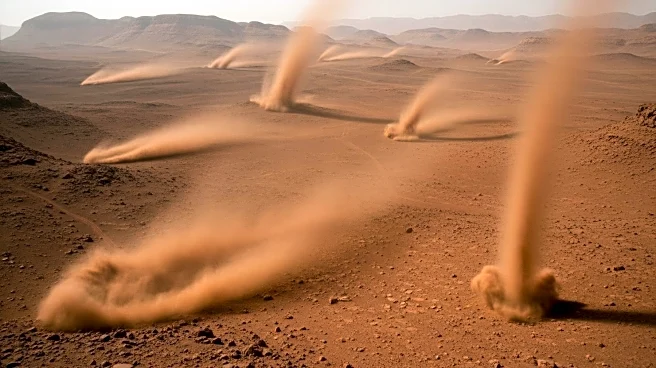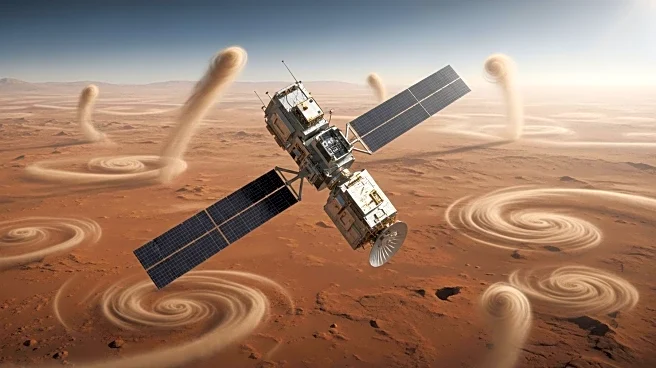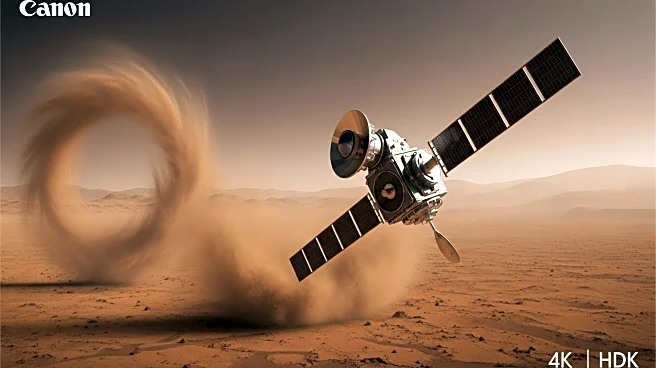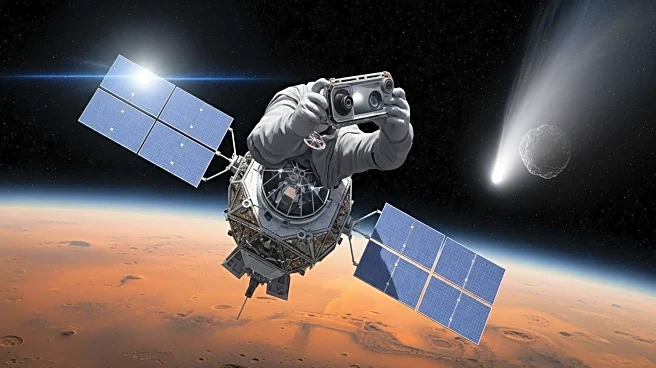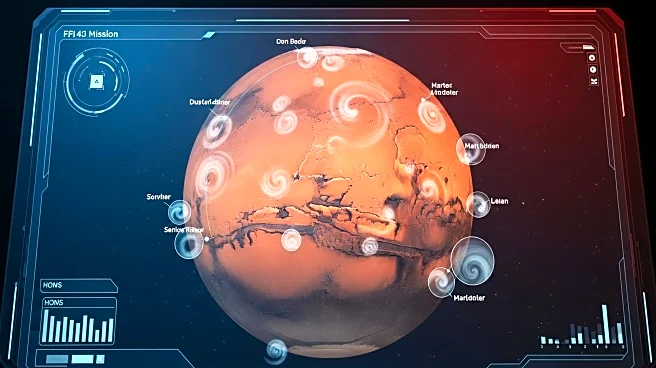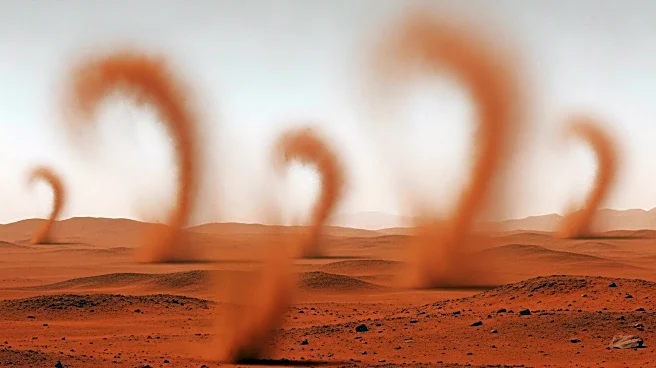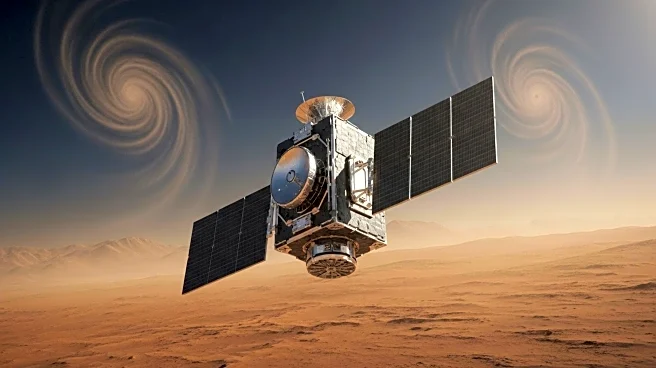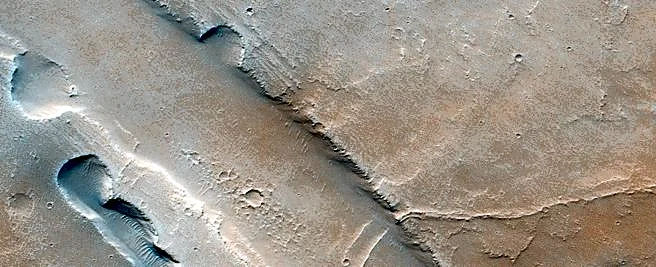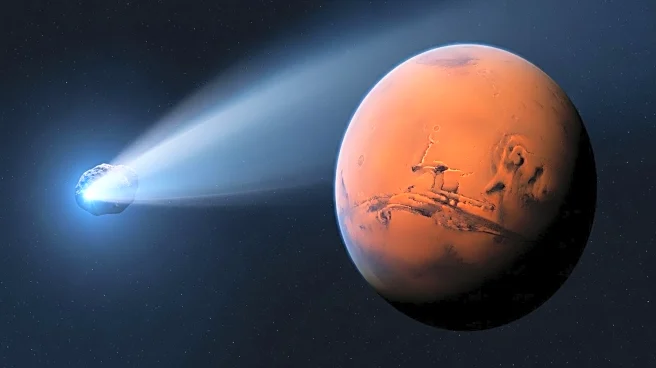What's Happening?
Researchers have cataloged 1,039 Martian dust devils using data from the European Space Agency's Mars Express and ExoMars Trace Gas Orbiter. This effort has resulted in the first global map of the Red Planet's surface winds. The dust devils, captured by the Colour and Stereo Surface Imaging System (CaSSIS), reveal wind speeds reaching around 98 miles per hour. These findings, published in the journal Science Advances, show that these whirlwinds exceed previous measurements from Mars rovers and climate models. The study utilized artificial intelligence to analyze the shifts between consecutive frames, calculating the speed and direction of each dust devil. This data is crucial for understanding Martian climate processes, including dust storm initiation, cloud formation, and water vapor release into space.
Why It's Important?
The mapping of Martian dust devils is significant for future Mars missions, as it provides insights into wind conditions at potential landing sites. Understanding these conditions can help estimate how much dust might settle on rover solar panels, affecting their efficiency and the frequency of self-cleaning. The data also contributes to refining atmospheric models and improving weather forecasts on Mars. Dust plays a critical role in Martian weather and climate, influencing everything from local weather patterns to the quality of images captured by orbiters. This research enhances the ability to predict and plan for the challenges posed by Martian dust in future explorations.
What's Next?
The new catalog of dust devils allows researchers to direct more imaging efforts to specific locations and times where these phenomena are most likely to occur. This targeted approach can lead to more detailed observations and a better understanding of Martian weather patterns. The ongoing analysis of dust devil activity will continue to refine atmospheric models, aiding in the prediction of weather and climate on Mars. As missions to Mars advance, this knowledge will be instrumental in planning safe landings and operations for rovers and other equipment.
Beyond the Headlines
The study highlights the innovative use of existing technology to gather new scientific data. By turning image noise into valuable measurements, researchers have expanded the capabilities of orbiters not originally designed to measure wind. This approach underscores the potential for creative problem-solving in space exploration, where adapting technology to new purposes can yield significant scientific advancements.

